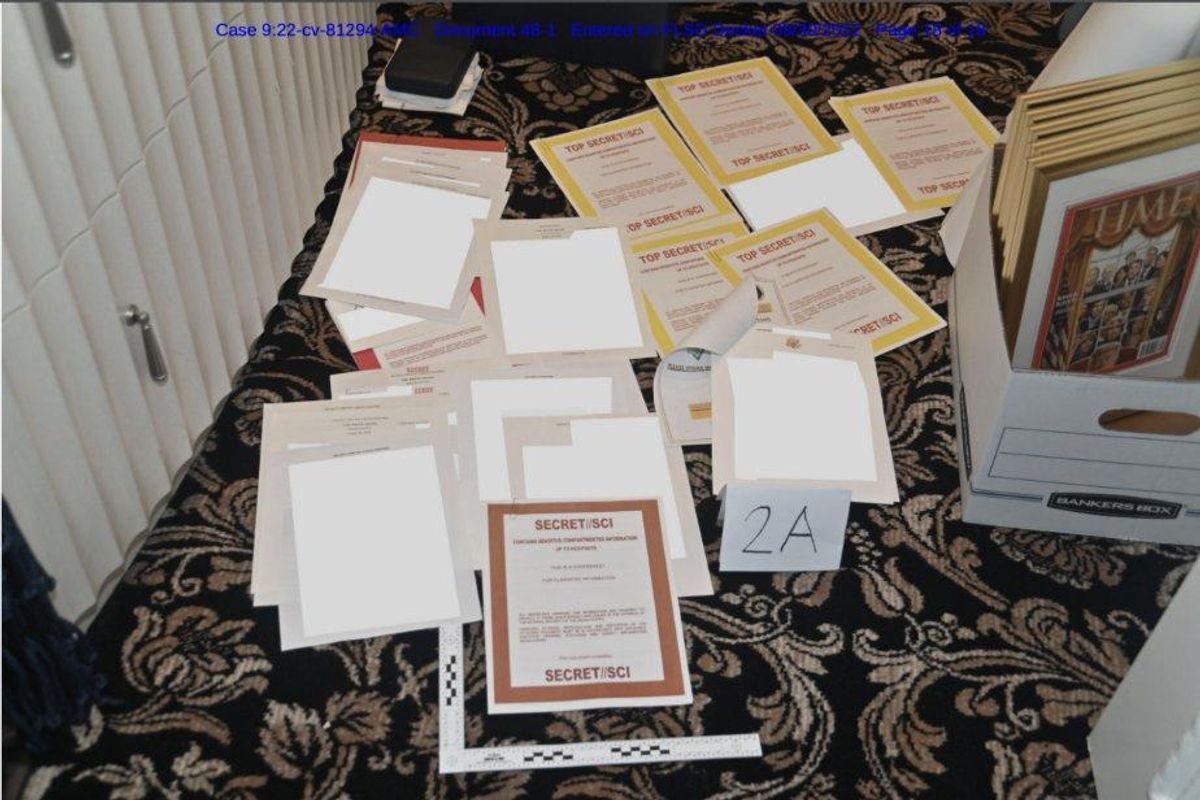
Donald Trump on Wednesday complained about FBI photography making him look bad after the Department of Justice released a photo of classified government documents recovered from Mar-a-Lago when FBI agents executed a search warrant.
The photo was the "most easily digestible element of the filing," The New York Times reported.
"The folders were arrayed by agents at Mar-a-Lago after being removed from what the filing indicated was Mr. Trump’s office — they were not discovered scattered on the floor, according to two federal law enforcement officials," the newspaper reported. "Files or documents are not tossed around randomly, even though they might appear that way; they are usually splayed out so they can be separately identified by their markings. The ruler seen in the image is to give a sense of their size in relation to other objects."
None of the folders show that Trump declassified them.
IN OTHER NEWS: Conservative Karl Rove corrects Fox News host: 'None of these government documents are his'
"The government’s months-long effort to recover documents that were kept at Trump’s Florida residence after he left the White House doesn’t depend on that material being classified," The Washington Post reported. "But the question of whether Trump had classified material with him at his Mar-a-Lago resort has captured the public’s attention. The photo published by the government appears to answer that question quite affirmatively."
The photo appears to have also captured Trump's attention, who took to his Truth Social website to air his grievances.
"There seems to be confusion as to the 'picture' where documents were sloppily thrown on the floor and then released photographically for the world to see, as if that’s what the FBI found when they broke into my home. Wrong! They took them out of cartons and spread them around on the carpet, making it look like a big 'find' for them," Trump posted, revealing the classified documents were stored a cardboard bankers box.
"They dropped them, not me - Very deceiving," Trump argued, despite The New York Times writing, "the genesis of the photograph appears to be in keeping with standard protocols for how federal agents handle evidence they come across in a search."




